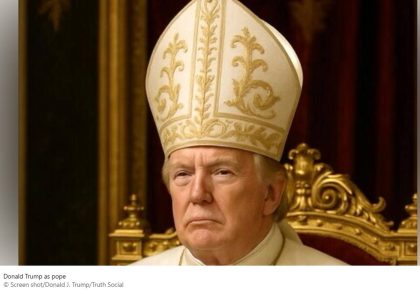By Julie Crawshaw and Forrest Jones
The Federal Reserve is propping up the entire U.S. economy by buying 61 percent of the government debt issued by the Treasury Department, a trend that cannot last, Lawrence Goodman, a former Treasury official and current president of the Center for Financial Stability, writes in a Wall Street Journal opinion article published Wednesday.
„Last year the Fed purchased a stunning 61 percent of the total net Treasury issuance, up from negligible amounts prior to the 2008 financial crisis,“ Goodman writes.
Goodman also warns that U.S. economy and markets are “at risk for a sharp correction” if conditions aren’t “normalized.”
„This not only creates the false appearance of limitless demand for U.S. debt but also blunts any sense of urgency to reduce supersized budget deficits.“
The U.S. government is growing increasingly more dependent on borrowing to finance itself, with net issuance of Treasury securities hitting 8.6 percent of gross domestic product (GDP) on average per annum, more than double levels before the crisis.
Fed intervention in the government debt market makes demand for Treasury bonds appear higher than it really is, as foreign creditors and other investors have fled U.S. government debt instruments and are looking elsewhere until the government makes serious attempts to curb spending and narrow its gaping deficits.
Goodman notes that foreign investors like Japan and China that once scooped up U.S. debt are shunning it. In 2009, such foreign purchases of U.S. debt amounted to 6 percent of GDP and has since falled by over eighty percent to a paltry 0.9 percent.
Without foreign buyers and a shrinking base of U.S. corporate and bank buyers, the Treasury has had to resort to the Federal Reserve itself to make the purchases. The Fed purchasing not only makes up the shortfall, but can keep long term interest rates artificially low.
„The Fed is in effect subsidizing U.S. government spending and borrowing via expansion of its balance sheet and massive purchases of Treasury bonds. This keeps Treasury interest rates abnormally low, camouflaging the true size of the budget deficit,“ Goodman writes.
„Similarly, the Fed is providing preferential credit to the U.S. government and covering a rapidly widening gap between Treasury’s need to borrow and a more limited willingness among market participants to supply Treasury with credit.“
Political bickering on both sides of the aisle has prevented politicians from cutting spending and undertaking fiscal reform.
Arguing over the role of tax hikes versus spending cuts hit a fever pitch in 2011, when both sides in Congress waited until the last minute to agree to terms surrounding lifting the government’s debt ceiling.
Should fiscal bickering return, expect investors in U.S. debt who are not employed at the Federal Reserve to take note, other experts say.
„If people dig in, the polarization will get worse, and that could be the worst outcome for markets,“ says Eric Stein, vice president and portfolio manager at Eaton Vance in Boston, according to Reuters.
Source: Moneynews






